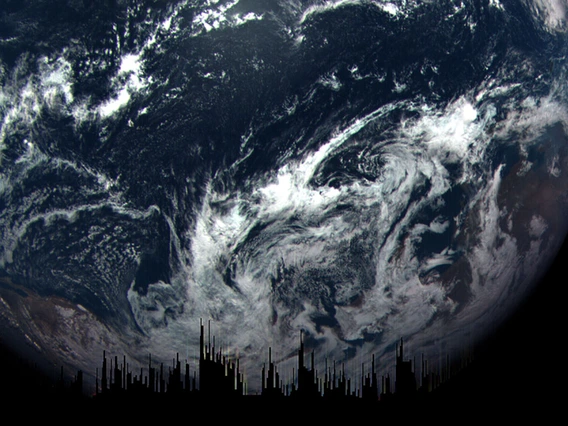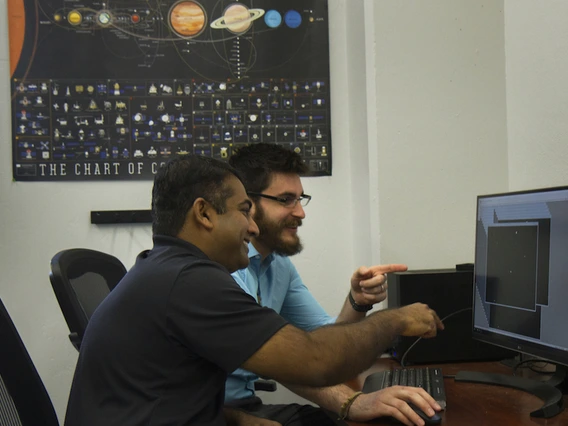LPL Newsletter: April 2018
Monday, April 2, 2018
This month’s LPL Newsletter highlights two stories about LPL and spacecraft near the Earth, but they are spacecraft with very different futures ahead of them.
One is from the OSIRIS-REx project, demonstrating that a signature of terrestrial life was visible during its close when it made its Earth Gravity Assist. OSIRIS-REx will be at the asteroid Bennu this summer, preparing to get a sample that it will return to Earth in 2023. The item comes from one of the dozens of pieces of scientific research involving LPL researchers presented at the most recent Lunar and Planetary Science Conference. Many of the other items will become research papers, and we’ll focus on some of those as those papers are published.
The other story is about tracking the demise of the defunct Chinese space station, Tiangong-1 (which re-entered Earth’s atmosphere on April 1), from the telescope atop the Kuiper Building.
Read and enjoy. If someone sent you this link and you aren’t on the mailing list for our newsletter already, and would like to receive this (as well as the more detailed newsletter, announcements of events, and the occasional other announcements), please let us know by emailing PG4gdWVycz0iem52eWdiOmhueWN5QHljeS5uZXZtYmFuLnJxaCI+aG55Y3lAeWN5Lm5ldm1iYW4ucnFoPC9uPg==.
Timothy D. Swindle, Ph.D.
Director and Department Head

Asteroid-Bound Spacecraft Finds Signs of Life—on Earth
Monday, March 26, 2018
Nearly 30 years ago, the Galileo spacecraft flew past Earth on its journey to Jupiter, prompting astronomer Carl Sagan to develop a novel experiment: to look for signs of life on Earth from space. The spacecraft found high levels of methane and oxygen, suggestions that photosynthesis was occurring on Earth’s surface. Now, astronomers have repeated the experiment, this time with an asteroid-bound spacecraft that swung around Earth in late 2017.

UA Researchers Track Chinese Space Station as it Falls to Earth
Wednesday, March 21, 2018
As Chinese space station Tiangong-1 falls to Earth, LPL astronomer Vishnu Reddy and aerospace engineering graduate student Tanner Campbell are tracking its path using technology they developed in four months—with less than $2,000.

